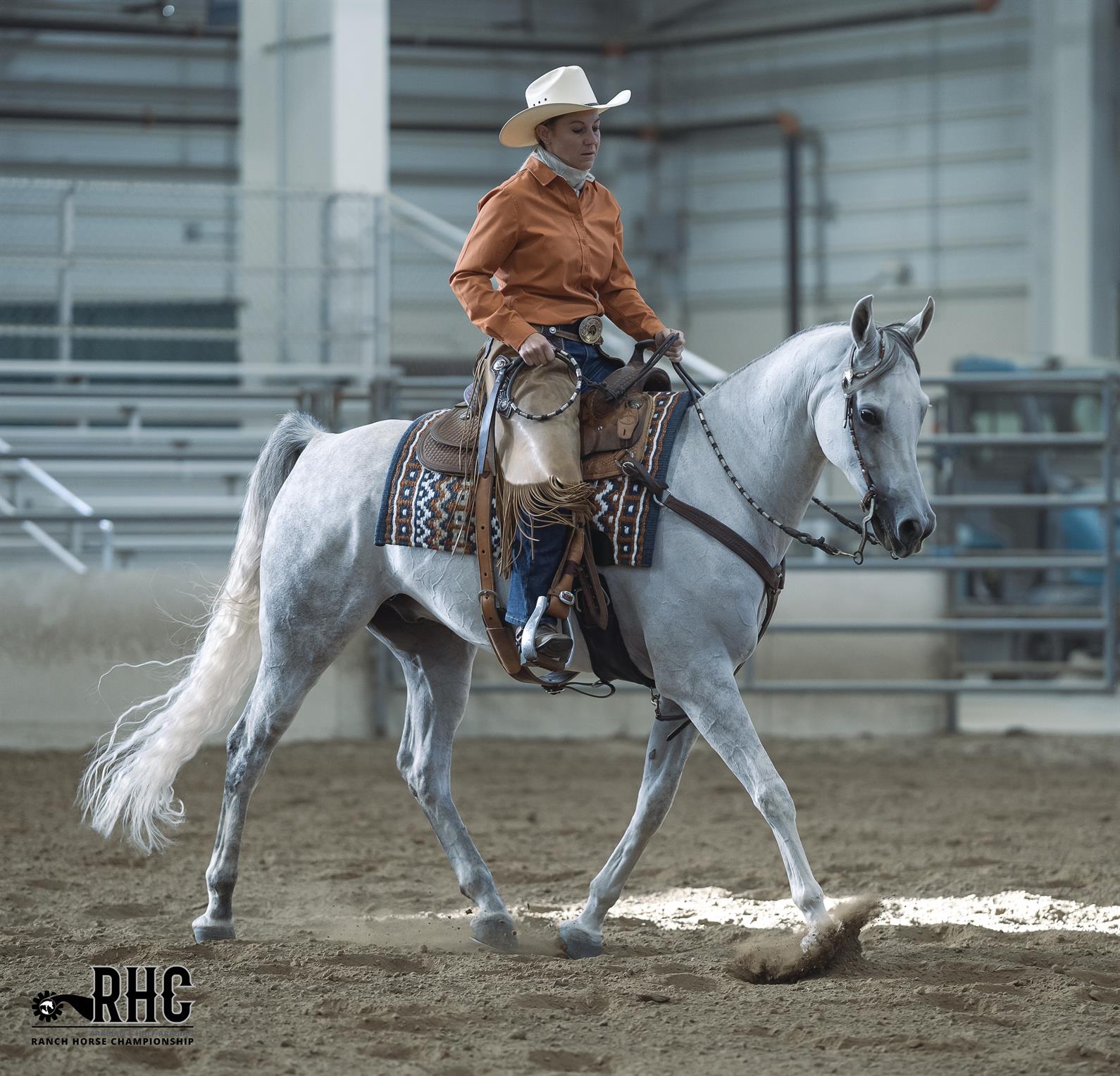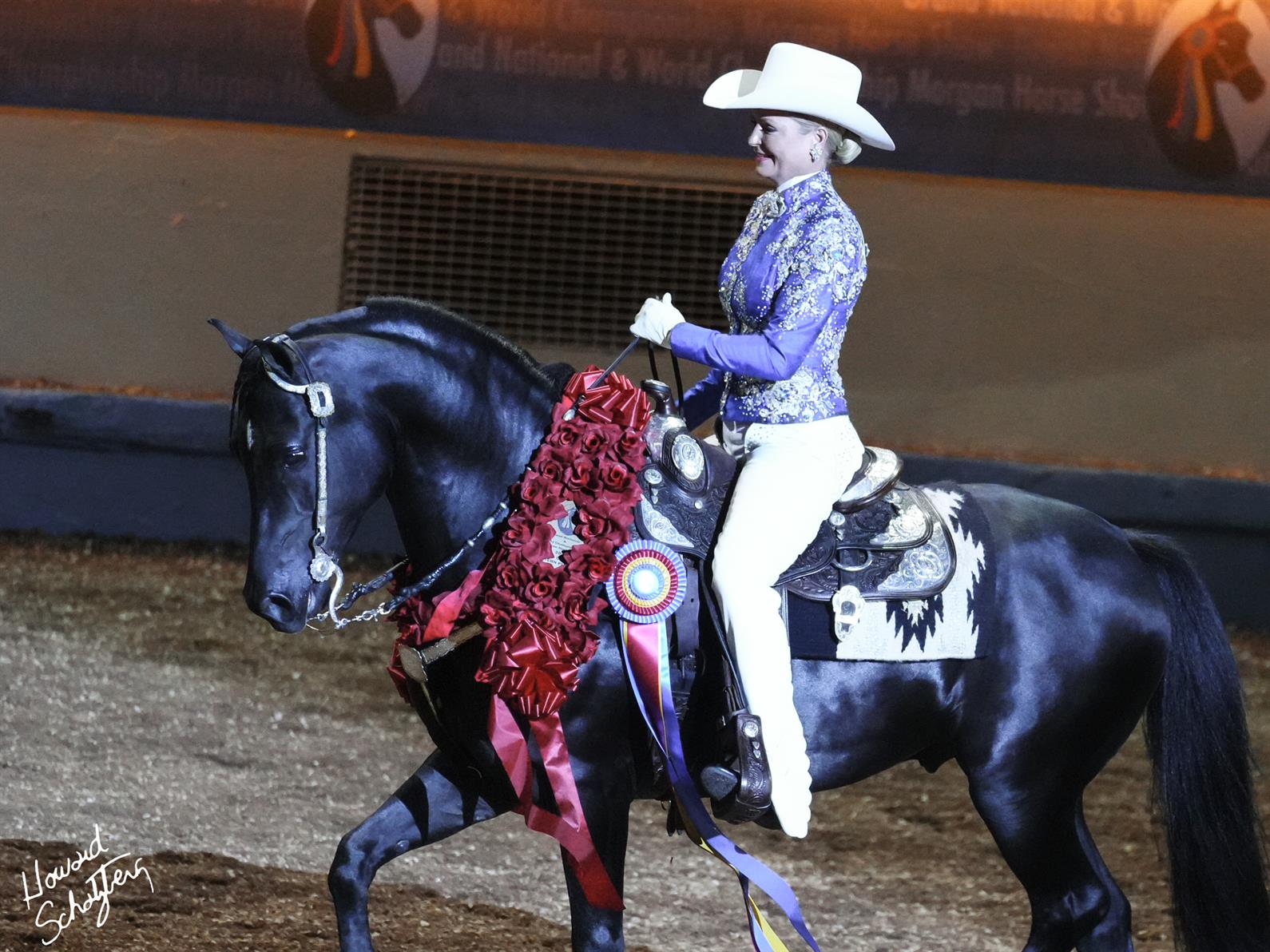
The Western category encompasses a wide variety of disciplines, including reining, trail, ranch, equitation, and Western dressage, all of which have lesson programs at barns across the country.
“The lesson programs are such an important part of all of our breeds and all of our industries, because it's the way we're really getting new people introduced to horses,” said Kelly Kraegel, owner of Cottonwood Creek Ranch in Oklahoma City. “It's so important for each individual business, but it's also important to each breed, and then to our horse industry as a whole.”
But what can you expect from your first lesson in a Western program?
- You’ll learn what it takes to take care of a horse.
Before her students even take their first ride, B.J. LeMaster, a USEF show judge and trainer from Sacramento, Calif., shows them how to take on all responsibilities associated with taking care of a horse, even those that don’t involve riding.
“When they get to my barn, they are shown where all of the equipment is, where the brushes are, how to keep them clean, where the halters are,” LeMaster said. “They go out and they put halters on their own horses. They learn how to lead them in. They learn how to tie them up safely. They learn all the grooming—how to pick up their feet, how to use a currycomb shedding blade, how to give baths when they are done with the grooming. If they've focused well enough, then they can put a bareback pad on and a snaffle, and they can go out and have their first actual ride.”
LeMaster says her students appreciate this holistic approach, as it helps prevent their focus from sliding.
“By the time they're through at my place, they love the interaction with the horses—the taking them out and letting them dry off when they're hosed off. They enjoy the grooming afterwards and the occasional carrot in the feed tub,” she said. “I prefer it that way because it teaches them better balance and a lot better focus on the horse.”
Kraegel’s introductory lessons prioritize riding, but that doesn’t mean her students don’t learn about horsemanship, safety, and equipment.
“I let them carry everything, whether they're five years old or a grown-up. I'll hand them the saddle pad and show them how we put everything on,” Kraegel said. “I'll remind them about main safety. It's like a safety overview [and] introduction to horses.”
- You might start on a bareback pad.
LeMaster starts all her new students on a bareback pad. She allows her students to choose their particular riding discipline when they can walk, trot, and canter or walk, trot, and lope while riding on the bareback pad.
“I have wonderful school horses, so I'm able to start everybody bareback instead of starting them right away making a choice of a saddle that they may not want in six months,” LeMaster said.
The first steps are the basics, with the lesson tailored to a student’s age and level of understanding.
“In that first ride, they learn how to stop and go. They need to be okay with turning left and right—or towards the house or away from the house, because if they're four or five years old, sometimes they're not good with left and right,” LeMaster said. “They progress from there; they make circles in their next lessons.”
After students get their saddle, they start a new set of lessons on how to properly orient themselves on it—including what not to do.
“I'll tell them what a saddle horn is for; if we were out roping steers or cattle, we'd need to dally off (wrap the end of the rope around the horn) on that. That is not for holding on. If you were riding your bike or your car and you got scared, you're not going to grab the seat and let go of the steering wheel or the handlebars, because then nobody is driving, and you're going to crash for sure,” Kraegel said.

- Western equipment and horses are often more secure than those of other disciplines.
“The horses tend to be a little bit slower, quieter anyway, just kind of by the nature of the discipline,” Kraegel said. “And people have a Western saddle, which is a lot more secure. It's bigger. It's less slippery. They feel a little bit safer. The stirrups are more secure, so they can't swing around quite as much.”
However, this doesn’t mean Western riding is necessarily easier.
“When you watch other people ride or you see it in the movies, it just looks like you just get on and go,” Kraegel said. “Like anything, it does take practice.”
Kraegel explained that often her students are unaware of the nonverbal signals they’re sending their horses.
“If I'm having a hard time explaining to them to keep their heels down and keep their feet off the horse unless they're wanting to go very, very fast, and they think they are, I'll take a video of them down one rail to show them what I'm talking about,” she said. “And they're like, ‘Oh my goodness,’ because most people just don't realize what's going on with their own body. They think they're holding still and staying out of the horse’s way, but until they actually see it, they can't really tell.”
- Don’t underestimate your strength and ability.
“If somebody doesn't have the core strength and the leg strength that it takes to make a really good English rider, they can get by starting Western and still being able to ride,” LeMaster said. “Not saying that a good Western rider doesn't have a beautiful core and excellent legs, but the Western saddles just give us a little more support.”
Kraegel agreed, explaining that Western riding is more of a mental game.
“Even though we're not posting, and our horses are going slower, every little thing that you do will show up in your horse’s performance, and all those tiny movements make a big difference to the horses,” she said.
LeMaster also said her new students are intimidated by the size of the horses they train with, but they quickly learn how to work with them.
“In the beginning, there's a lot of fear as far as control: ‘Can I control this thing? It's big.’ And they learn very quickly that it's enjoyable and, yes, they can,” LeMaster said. “Their self-confidence grows. They learn to have a softer hand and a softer leg and a softer voice, and everything works very well.”
- The world of Western riding is diverse and multidisciplinary, and these disciplines are open to all.
“I do many Western disciplines. In fact, the only things that I have not ever done involve cattle and roping. I have done everything from showmanship to trail to horsemanship to equitation to reining,” LeMaster said. “Western is a very, very solid discipline, and you can do so much with it. It also leads to bridleless riding far more quickly than English does, which everybody seems to enjoy a great deal.”
“I like all the disciplines, so my favorite part of all of them is just having a nice horse,” Kraegel said. “I don't know that I really have a favorite; I just have some horses I enjoy more than others.”
For more information, watch the First Riding Lesson video in US Equestrian’s Learning Center. Related USEF Network content, national affiliate information, competition recordings, and news can also be found on the Western, Western Dressage, and Western Reining Seat Equitation pages in the Learning Center.


